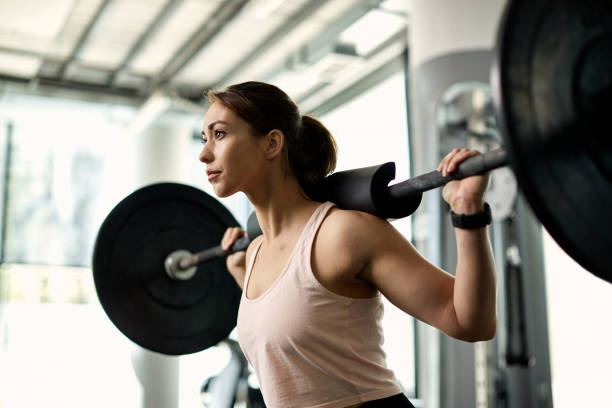The Menstrual Cycle & How It Affects Exercise

Phases Of The Menstrual Cycle
A woman’s menstrual cycle has different phases; the menstrual, follicular, ovulation and luteal phases. However, they are usually broken into just the follicular and luteal phases.
First is the menstrual phase, when a woman gets her period and her hormone levels of oestrogen and progesterone drop. This typically lasts 3-7 days but can vary between individuals.
This also starts the follicular phase, which begins on day one of your period and continues until ovulation, a total of about 16 days.
During the ovulation phase, the luteinising hormone is released in response to the follicular phase’s rising oestrogen levels. One sign of ovulation is a slight rise in body temperature, which happens around day 14 of your cycle.
The final phase is the luteal phase. This is where you will see a rise in progesterone and a slight rise in oestrogen levels, followed by a drop in both hormones and the restart of the cycle (barring pregnancy). The luteal phase is when women experience PMS symptoms, like bloating, headache, weight changes, food cravings and trouble sleeping. This phase lasts 11-17 days.
How These Phases Affect Our Exercise Routines
Designing your exercise programme around your individual cycle will help optimise your results. When you are in your luteal phase your oestrogen levels fall and your progesterone rises. This tends to make you more tired and have a lower mood. This can affect exercise as you will be more tired and you will have less energy and motivation for your workouts. At this time it may be best to reduce intensity of your workouts, remember to be kind to yourself and not get frustrated if you aren’t feeling as strong as usual.
The days leading up to and around ovulation are when you are at your strongest and have the most energy. This is when you will be able to get the most out of your workouts and be able to push yourself to the best of your ability. Some research has found that strength training during the follicular phase resulted in higher increases in muscle strength compared to training in the luteal phase.
During the follicular phase is also when you may see a benefit to endurance performance as oestrogen increases your reliance on fats for energy during submaximal exercise. This means that you can exercise for longer before dipping into your limited stores of glycogen. Furthermore, your cycle can also have an effect on your flexibility. Women often become more supple when oestrogen peaks right before their period.
Tracking your cycle is also important as it can help you understand when your body enters each phase, any resulting symptoms and how to adjust accordingly. It is important to remember that every woman’s cycle is different and a multitude of factors can play a role, including the use of oral contraceptives, eating disorders and medical conditions such as polycystic ovary syndrome (PCOS) or uterine fibroids.
The Importance Of Hydration During Your Cycle
A number of hormonal factors increase the risk of dehydration just before and during the time of your period. During this time you should make sure that you are drinking enough water, especially during your training sessions and in hot weather.
Macronutrient Needs During Your Cycle
The way your bodies metabolise macronutrients, particularly carbohydrates and protein, can change throughout your cycle. The amount of carbohydrates you need to fuel your body can also change during your cycle. In a fasted state, women were found to perform better in the follicular phase than the luteal phase. But when fueling with carbs, luteal performance caught up. This is because oestrogen and progesterone, both of which peak during the luteal phase, have been shown to suppress gluconeogenesis, a cellular process necessary to utilise energy stores in the body. External carb sources therefore become critical for energy during exercise, especially when over 60 minutes long. Female athletes preparing for an endurance event in their luteal phase should make sure they’re eating adequate carbs during the event to meet their increased needs.
There has also been evidence to suggest that the body requires more protein during the luteal phase. Tracking your macronutrients and what you eat alongside your cycle can be very beneficial in making sure that your body gets all the nutrients it needs. Especially if you are looking to optimise your training.
Contact Us
Thank you for taking the time to read this blog post on the menstrual cycle and exercise, we hope you found it useful. Should you require any more information, please do not hesitate to contact us today at David Jones Personal Training and one of our fantastic team members will get back to you shortly.
